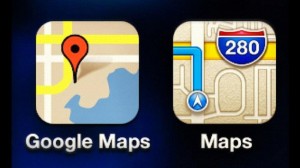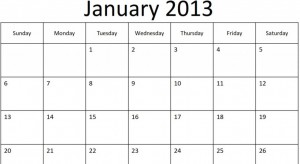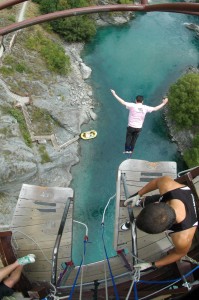business design contest personal school management technology websites: business design contests logo school management
by sendaiben
2 comments
Outsourcing design -using online design competitions for logos, websites, and more
(I’m really excited. This is my first post in response to a reader question. I feel like a real blogger now :))
A few years ago, after deciding to get a proper website made for us by a company, we realized we needed a logo for the school.
I originally approached a local designer, but that would have involved paying a high fee (over 150,000 yen) with little recourse if we didn’t like the end product.
Looking for alternatives, I found a website that arranges design competitions: people post their design projects, put up a prize, and designers then submit their ideas. The person who posted the project chooses a design they like, and that designer gets paid. We used DesignContest.com but there are now dozens of websites based on this same model. I recommend doing some research before committing to one.
The advantages for us was a much reduced price (we paid $300 for the design above), a much wider variety of ideas, and a chance to work with various designers to narrow down what we wanted.
My original idea and the final product were completely different, and I am convinced we would not have gotten such a good result if we had commissioned someone in a more traditional manner.
The best thing about the process for me was that the contest lasted for a couple of weeks, and during that time we were able to look at designs, comment on them, and have designers then come back with new designs based on our comments.
We had about 40 people participate in our contest, and it was a very smooth and interesting experience. If you don’t get enough entries or don’t like any of the designs you get your money back, so it’s a fairly risk-free process.
You can do the same thing with logos, website design, blog design, t-shirts, etc.
I’m planning to get someone to redo my blog at some point 🙂
Has anyone else used online design contests? How did it go?
apple google iPhone life in Japan living in Japan personal technology
by sendaiben
leave a comment
Google Maps App for iPhone
Another tangent, I’m afraid. If you don’t have an iPhone you can probably stop reading now. If you have an iPhone that is running iOS 5 or less, this may be of interest. But if you have an iPhone running iOS 6 and you haven’t downloaded the Google Maps App yet, keep reading.
I’ve been playing with the new Google Maps App on my iPhone 4S for a couple of weeks now. The short version is that it is amazing.
(it’s not just me that thinks so, either: here’s the Wall Street Journal version)
The long version:
- all the accurate data from before
- better interface
- amazing driving instructions (it’s better than any dedicated satnav I have used)
- sharpened up graphics
I’ve used it a few times while driving, and the app is amazingly user-friendly. Clear voice directions, simple screen, very user-friendly (I particularly like the way you can scroll around the map then get back to your route with a simple ‘resume’ button).
The local transport functionality is there too: this is probably the thing I use my phone for the most. When in an unfamiliar city, the app gives accurate local train and bus times and connections -so much so that I use it instead of the official websites to find times.
No negatives I have found at this time. If you don’t have it get it now -it’s free.
*this review is only talking about the Google Maps App in Japan. I haven’t had the chance to test it abroad yet 🙂
Annual Review 2012/Plan for 2013
Welcome to the first post of 2013 on this blog. This year is the year of the snake, and I will be 36 at some point, so apparently it’s my time to shine. Looking forward to learning and experiencing a lot this year.
This week for the first time I have finally got around to doing an annual review of last year and a plan for this one. I found the experience very interesting and useful.
I’m not going to go into the details of what I ended up writing, but I thought I would share the process in case someone else might find it useful.
I started off with three broad categories (work, personal, and relationships), then wrote a brief description for each based on what happened in 2012. Each category was broken down into multiple sub-categories. The descriptions were short and contained my impressions. It probably took me a couple of hours to write everything out as this was the first time I have done this.
The next part was even more time-consuming, but also a lot of fun: planning out 2013. I took the same categories and sub-categories and wrote out what I wanted to get done this year. For this document, I was as specific as possible with regards to numbers, dates, etc.
Finally I made a simple spreadsheet with monthly goals to be ticked off. I’m going to tape this to my computer monitor to make sure I don’t forget about the plan.
Next December when I come to do my 2013 review, I’ll be able to measure my results against the specific goals I set.
If you have a free day or so, I really recommend this exercise. I found it extremely useful as it forced me to think about what exactly I want to accomplish in the short-, medium-, and long-term.
What does it feel like to do a bungee jump?
I have a slightly different post for you today, one I have been meaning to write for months now. In February this year (2012), I flew to New Zealand to meet up with my friend Paul for a week in Queenstown on the South Island.
One thing we decided to do was a bungee jump. It’s something I had always wanted to do, and it seemed like the perfect place to do it -after all, commercial bungee jumping started in Queenstown.
I started doing some research on the internet about what it was like, but didn’t find anything detailed about the process, or the feelings, so I decided to write something and try to fill that gap.
So this post will try to answer the question of what doing a bungee jump for the first time feels like.
A lot of my experience was shaped by the extremely professional operation that A.J. Hackett runs in Queenstown as their whole operations is designed to manipulate you into successfully completing your jump.
1. Signing up and pre-paying
We signed up for our jump and paid in advance at a city centre location. This is important, because the photos do nothing to prepare you for how high up the actual jump feels when you’re standing on something looking down into space. Once you’ve paid your non-refundable fee, you have a significant stake in actually doing your jump.
2. Arriving at the centre
Our first reaction was ‘that is so high up, there is no way I am going to be able to jump off that bridge’. The check-in process is very quick though: go to the desk, sign in, get weighed, go to the toilet for one last time, then walk out onto the bridge. Luckily we didn’t have to wait at all.
3. Preparing for the jump
My number was first, so I was asked to sit down and they immediately started harnessing me up. First I put on a harness, then the bridge guys (jump masters?) wrapped a towel around and between my ankles, then they attached the rope. They also asked how wet I wanted to get (one of the benefits of jumping above a river is that you have some flexibility with regards to hitting the surface).
4. Out on the ledge
Then very quickly I was walked out onto the ledge. It’s just like walking the plank in old pirate films, a short platform over the void. The guy with me was very matter of fact, and I can only describe my feelings as controlled terror. I was terrified, but functional. It took me a really long time to let go of the bridge (as you can see in the video below).
5. The mind game
Now this is where they get very clever with the mind-control techniques. First of all, the bungee centre is a tourist attraction: coaches arrive regularly and large numbers of tour groups watch the bungee jumps. As I was doing mine there were probably about thirty people watching from the side. What the staff do is make you look over and see just what kind of an audience you have (where he tells me to wave at the other camera, that is where the people are standing). Now on top of the financial commitment you also have a serious pride commitment -there is no way you are going to back out in public. The final thing is that it is all very quick: you look at one camera, wave at another, then have a five, four, three, two, one countdown and jump.
6. Stepping off
This was slightly surreal. I wasn’t sure that I would be able to do it until I actually did it. At first, it felt like time stopped (like those cartoons where the characters hang in the air before looking down and dropping). Then it was just falling through the air. The thing that surprised me is that there is no jerk at all, the whole motion is very smooth as the bands take up the slack and stretch. Once you are bouncing around it is exhilarating.
7. Back to earth
I was collected by two guys in an inflatable boat, as you can see in the video. After my jump, I ran up the steps at the side of the river to see my mate Paul jump after me. We then spent another 30 minutes or so there drinking coffee and enthusing about how amazing the whole experience had been.
Doing a bungee jump was a great experience and I am very glad I did it. It is a completely artificial experience, but at the same time one of the few in modern life where you have the chance to do something that feels incredibly dangerous -to face mortal fear and push through it- while at the same time remaining almost completely safe.
The stunning location was a huge bonus, and doing it with a close friend just cemented the experience.
If you have the chance, I would recommend doing a bungee jump at least once. I may do it again, but I don’t think it would have the same primal effect on me: having done it once, I now know it is safe.
eikaiwa iPhone kids Language learning materials online resources personal Review school management technology
by sendaiben
2 comments
Nexus 7 Tablet Review
The Nexus 7 tablet by Google and Asus was finally released in Japan last month. I am a huge Google fan and am looking for alternatives to the iPad for the classroom. It was too good an excuse, so I went ahead and ordered one.
My wife has an iPad 2, and I will be comparing the Nexus 7 to that, as well as to my iPhone 4S. This is my first Android device.
In brief: it’s great. I really like the 7″ form factor. It feels much lighter and easier to hold than the iPad, and at just under 20,000 yen, it is less than half the price of the new retina iPad.
The good:
- size and weight are much more user-friendly than the iPad
- screen is good with internet, ebooks, and movies
- Android OS is fast and fairly intuitive
- 2000 yen credit for the Google Play Store
- One movie and three books included
- Lots of Japanese content on the Play store, including ebooks
- E-reader includes an easy to use J-E/E-J dictionary
- Skype is really easy to use
- Not as many apps as iOS
- No Flash support! This is huge, as most of the websites I want students to use with this (WordEngine, Starfall) are flash-based
- Not as intuitive as iOS in terms of navigation, etc.
Overall:
I love this tablet. For reading ebooks, watching movies, carrying around with me, reading PDFs, accessing the Google online world (gmail, reader, drive, etc.) it is wonderful. I’m really glad I got it, and it will supplement my iPhone 4S for most of these tasks.
However, unless I can get around the lack of Flash support (there seem to be workarounds for it, but they are not official and involve some risks) we won’t be buying these for students to use in class. It’s a shame, as the smaller and lighter form factor would make them easier to use for children than iPads.
Basically, if you use Google sites like gmail, drive, and reader, if you read ebooks and need a tablet to take movies and music on the road with you, this could be ideal. As a classroom tool it is crippled by the lack of Flash support.
Anyone else tried the Nexus 7?




